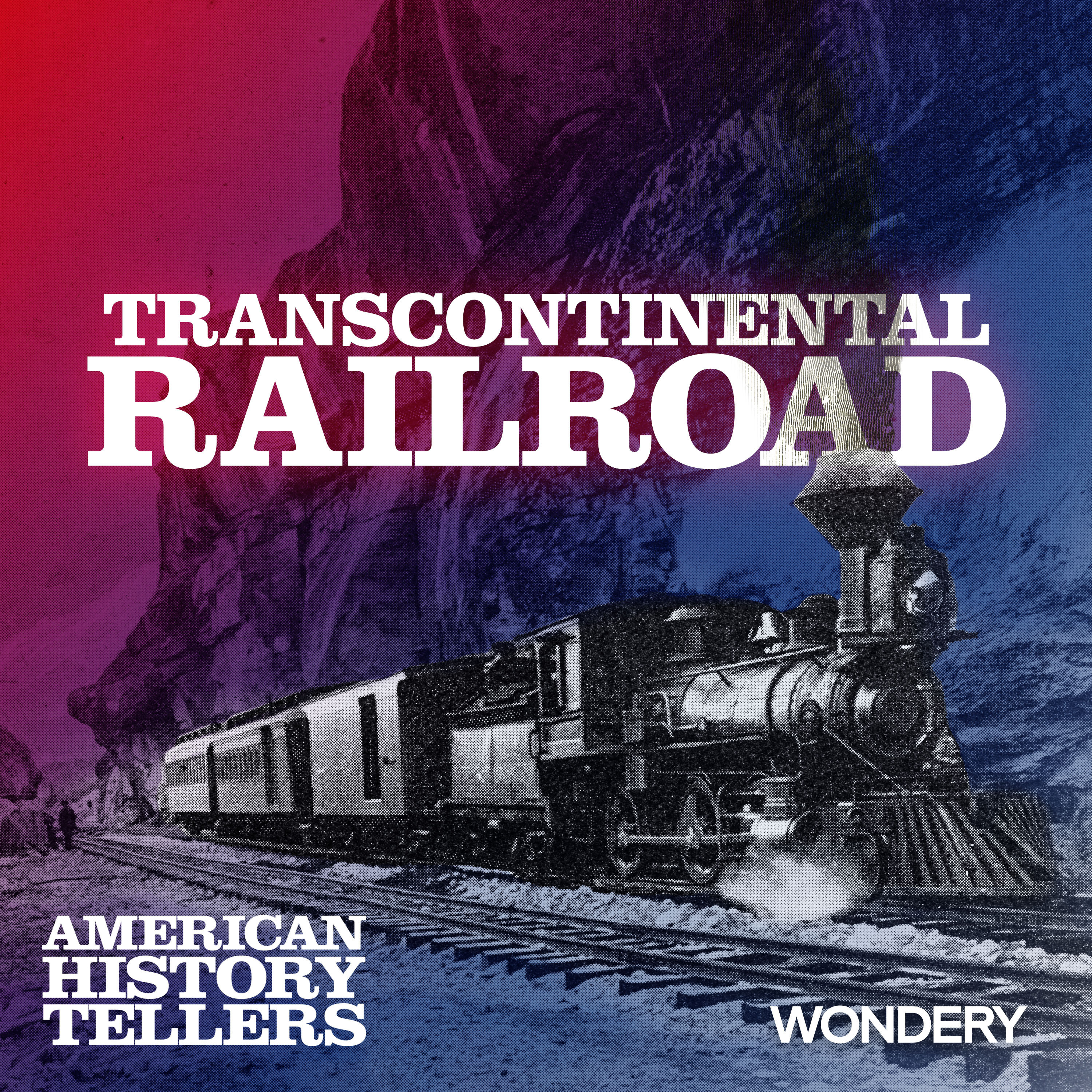
Transcontinental Railroad | The Iron Road | 5

American History Tellers
Deep Dive
Why were Chinese laborers crucial to the construction of the Transcontinental Railroad?
Chinese laborers were hired during a labor shortage and were instrumental in completing the most dangerous tasks, such as blasting tunnels through the Sierra Nevada mountains. Their hard work and resilience were key to the railroad's completion.
What challenges did Chinese laborers face while building the railroad?
They faced harsh working conditions, lower wages compared to white workers, and were assigned the most dangerous tasks, including handling explosives like nitroglycerin. They also endured discrimination and were often excluded from recognition for their contributions.
Why were Chinese laborers excluded from the famous photograph at Promontory Point in 1869?
Most of the Central Pacific workers, including Chinese laborers, were sent back to clean up the rail line before the celebration. Only a small crew of eight Chinese workers was present, and they were not included in the photograph, which whitewashed their contributions.
How did the Chinese Historical Society of America attempt to correct the historical record in 2019?
They published 'Voices from the Railroad,' a book that shares stories from descendants of Chinese railroad workers, aiming to highlight the contributions of Chinese laborers and correct the historical oversight of their role in building the Transcontinental Railroad.
What was the outcome of the Chinese laborers' strike in 1867?
The Central Pacific Railroad initially tried to starve the workers out by cutting off supplies, but they eventually raised wages and reduced work hours by one hour over a couple of months, acknowledging the laborers' demands.
What was life like for Chinese laborers in the railroad camps?
They lived in close-knit gangs, ate a Chinese diet, and were cared for by herbal doctors. They worked six days a week from dawn to dusk, enduring extreme weather conditions and dangerous work environments. Recreational activities included playing Chinese games and smoking opium.
How did the Chinese laborers' work compare to that of white workers?
Chinese laborers did the heaviest and most dangerous work, such as blasting tunnels through granite, while being paid less. They worked longer hours and faced more hazardous conditions, yet their contributions were often undervalued.
What happened to the Chinese laborers after the completion of the Transcontinental Railroad?
Some continued working on other railroad projects, while others returned to Chinese communities or started new ventures like fishing, farming, or import-export businesses. However, they faced increasing discrimination and violence, leading to the Chinese Exclusion Act of 1882.
How did the federal government recognize the contributions of Chinese laborers in 2014?
The U.S. Department of Labor installed a plaque honoring Chinese railroad workers, marking the first official government recognition of their labor. Descendants of the workers were invited to attend the ceremony.
What is the significance of Summit Camp and Summit Tunnel in the history of Chinese railroad workers?
Summit Camp was where thousands of Chinese laborers worked for over two years to build the largest tunnel in the Sierra Nevada. The site is now being considered for the National Register of Historic Places to preserve the legacy of their hard work and sacrifice.
- Completion of the Transcontinental Railroad on May 10, 1869
- Ceremonial golden spike driving
- Exclusion of Chinese workers from the official photograph
- The feeling of guilt among the workers regarding the omission of the Chinese workers
Shownotes Transcript
Chinese laborers did much of the toughest work building the Central Pacific Railroad. That included blasting tunnels through the granite of the Sierra Nevada Mountains to eventually connect to the Union Pacific line at Promontory Point, Utah, in 1869. Today, Lindsay is joined by Sue Lee, historian and former executive director of the Chinese Historical Society of America. She and historian Connie Young Yu edited Voices from the Railroad: Stories by descendants of Chinese railroad workers.
Order your copy of the new American History Tellers book, The Hidden History of the White House, for behind-the-scenes stories of some of the most dramatic events in American history—set right inside the house where it happened.
Be the first to know about Wondery’s newest podcasts, curated recommendations, and more! Sign up now at https://wondery.fm/wonderynewsletter
Listen to American History Tellers on the Wondery App or wherever you get your podcasts. Experience all episodes ad-free and be the first to binge the newest season. Unlock exclusive early access by joining Wondery+ in the Wondery App, Apple Podcasts or Spotify. Start your free trial today by visiting wondery.com/links/american-history-tellers/ now.
See Privacy Policy at https://art19.com/privacy) and California Privacy Notice at https://art19.com/privacy#do-not-sell-my-info).